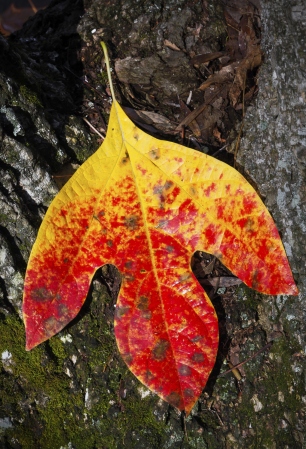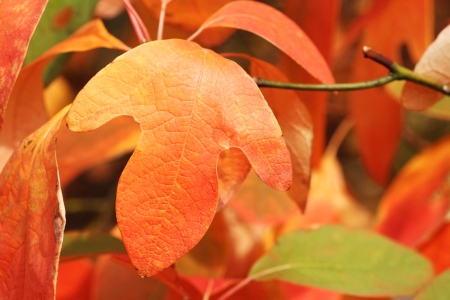Mystery, adventure, spies, turncoats, traitors, Patriots, Tories, and above all, romance, are interwoven in The Traitor's Legacy Series. Book One is award-winning historical romance novel, Enemy of the King, my version of The Patriot with ghostly flavors of Daphne Dumaurier's Rebecca.
Pleasant Grove, the home featured in Enemy of the King, was drawn from Drayton Hall, the oldest preserved plantation in America that's open to the public, located outside the city of Charleston, SC. I also depicted parts of the old family homeplace in Virginia.
Part of the inspiration behind Enemy of the King came from research into my early American Scots-Irish and British ancestors who fought on both sides of the American Revolution. One direct forebear five generations removed from me, Sam Houston, uncle of the famous Sam, fought in the Battle of Guilford Courthouse, NC and kept a diary used by historians today. I was also inspired by the Battle of Kings Mountain, in North Carolina, that helped turn the tide of the revolution in favor of the Patriots and is featured in Enemy of the King. These accounts turned my focus to the Southern face of the war.

Another tie to the past is my grandfather, seven greats back, Sir George Augustus Elliott, a British general and Governor of Gibraltar during the American Revolution. He was awarded the title Lord Heathfield, Baron of Gibraltar, in honor of his bravery in its defense during the attack by the Spanish and French. While Sir George was giving his all for king and country, his grandson was fighting under George Washington as a commissary officer. There must have been quite a rift in that family. While I'm on the subject of ancestors and the past, I should add that the research for this series is staggering, and seemingly endless. I've had help from historians, including the former head historian with colonial Williamsburg, Taylor Stoemer, and assistance from reenactors. I've visited the sites featured in the books, and read a lot. Watched every series on the American Revolution in general, plus specific battles and characters. But I digress. Frequently.
The Wild Rose Press published Enemy of the King in 2009. A sequel featuring the fascinating antagonist, British dragoon Captain Jacob Vaughan, tugged at my mind. I even had a plot and title, Traitor’s Legacy. But, I couldn't settle on the right setting for the story, so left it to simmer and went on with other works.
In late spring, 2012, North Carolinian, Ann See, a big fan of Enemy of the King and fellow colonial American enthusiast, contacted me about writing a sequel set in the oft overlooked, but historically significant town of Halifax, NC. As Enemy of the King takes place in North and South Carolina, and I have strong ties to the Carolinas, this suggestion was appealing.

- the Owens House
At Ann's invitation, my husband Dennis and I made a trip to Halifax, and were given a royal tour of this carefully preserved glimpse into our nation’s dynamic past. The quaint town is like a mini colonial Williamsburg. Most impressive among Halifax’s claims to fame, in the spring of 1776, North Carolina’s Fourth Provincial Congress met there, and on April 12, unanimously adopted a document later called the ‘Halifax Resolves,’ the first official action by a colony proclaiming their independence from England. This made Halifax a nest of rebels and thorn in the side of the British––what I needed for my plot.
 Much of Traitor's Legacy takes place in and around Historic Halifax. Person’s Ordinary, featured in the novel, was an important stage-coach stop and is the oldest landmark in Halifax County. Located in Littleton, Person’s Ordinary is the oldest preserved structure of its kind in the East, and once served as a tavern owned by Thomas Person. The British occupied the Ordinary in May 1781 when they made their way through Halifax en route to Virginia.
Much of Traitor's Legacy takes place in and around Historic Halifax. Person’s Ordinary, featured in the novel, was an important stage-coach stop and is the oldest landmark in Halifax County. Located in Littleton, Person’s Ordinary is the oldest preserved structure of its kind in the East, and once served as a tavern owned by Thomas Person. The British occupied the Ordinary in May 1781 when they made their way through Halifax en route to Virginia.
The British Legion, also known as Tarleton’s Legion, headed by the infamous Lieutenant Colonel Banastre Tarleton, were on horseback and out in front of the rest of the army under command of General Lord Cornwallis. Tarleton underestimated the harassment inflicted by the local militia, whose stubborn resistance resulted in an extended stay by the British and reprisals against the town. In fact, there was so much looting that when Lord Cornwallis arrived, he had to court-martial and execute one sergeant and a dragoon. Apparently, his lordship didn’t want to leave a trail of animosity everywhere his army went. .
 Thornton Hall, the plantation home featured in Traitor’s Legacy, is drawn from a run down but once outstanding old house, known as Little Manor, located a mile or two from Person’s Ordinary. The original home was also built by Thomas Person. He wouldn’t recognize it now. Dusk was falling when we drove to the overgrown site to see the derelict house. I knew at once I’d found the perfect home for the novel. Ann supplied me with descriptions of the old house in its glory days and I resurrected it, like restoring the Titanic, with some poetic license, of course. I’d love to move into Thornton Hall. The gardens are also lovely.
Thornton Hall, the plantation home featured in Traitor’s Legacy, is drawn from a run down but once outstanding old house, known as Little Manor, located a mile or two from Person’s Ordinary. The original home was also built by Thomas Person. He wouldn’t recognize it now. Dusk was falling when we drove to the overgrown site to see the derelict house. I knew at once I’d found the perfect home for the novel. Ann supplied me with descriptions of the old house in its glory days and I resurrected it, like restoring the Titanic, with some poetic license, of course. I’d love to move into Thornton Hall. The gardens are also lovely.
Mystery, intrigue, spies, a coded letter, and stirring romance fill the pages of Traitor’s Legacy, while bringing history to life. The story concludes in Williamsburg and Yorktown.
Story Description: 1781. On opposite sides of the War of Independence, British Captain Jacob Vaughan and Claire Monroe find themselves thrust together by chance and expediency.
Captain Vaughan comes to a stately North Carolina manor to catch a spy. Instead, he finds himself in bedlam: the head of the household is an old man ravaged by madness, the one sane male of the family is the very man he is hunting, and the household is overseen by his beguiling sister Claire.
Torn between duty, love, and allegiances, yearning desperately for peace, will Captain Vaughan and Claire Monroe forge a peace of their own against the vagaries of war and the betrayal of false friends?~
I recently completed the third novel in the Traitor's Legacy Series, entitled Traitor's Curse, and submitted it to my historical editor at the Wild Rose Press. While also carefully researched historically, Traitor's Curse has a ghostly element and a mysterious Gothic flavor. This novel will come out in 2015. I don't know when yet. Release date to be determined.
Stay tuned. Meanwhile, catch up by reading the two books already released in the series, Enemy of the King and Traitor's Legacy are available in print and kindle at Amazon, and in eBook from all major online booksellers.
.
 Our cats, particularly our Siamese Tabby Mix, Pavel, love catnip. He rolls in it and chews on the leaves when I sprinkle some on the climbing perch. Even if Pavel is upstairs, he appears in seconds when I get out the catnip. I'm not sure why cats are so besotted by it, just that many are. Though not all. Percy doesn't care one way or the other. Our kittens, Peaches and Cream, are fans. This summer, daughter Elise and I gathered seeds of various plants to save, including catnip. We put them in an envelope and left it on the counter, only to discover the contents scattered and Pavel's mouth suspiciously covered with the leaves of catnip that had accompanied the seed gathering. He claimed to know nothing about it, with that innocence felines can conjure.
Our cats, particularly our Siamese Tabby Mix, Pavel, love catnip. He rolls in it and chews on the leaves when I sprinkle some on the climbing perch. Even if Pavel is upstairs, he appears in seconds when I get out the catnip. I'm not sure why cats are so besotted by it, just that many are. Though not all. Percy doesn't care one way or the other. Our kittens, Peaches and Cream, are fans. This summer, daughter Elise and I gathered seeds of various plants to save, including catnip. We put them in an envelope and left it on the counter, only to discover the contents scattered and Pavel's mouth suspiciously covered with the leaves of catnip that had accompanied the seed gathering. He claimed to know nothing about it, with that innocence felines can conjure. 










